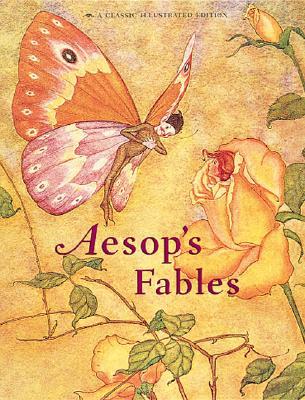
Aesop's Fables PDF
Preview Aesop's Fables
Grade 3 Up-- No other collection of fables so clearly demonstrates the range of artists who have illustrated Aesop than this one. More than 50 fables are each accompanied by at least one illustration from nearly 30 works from Charles Henry Bennett's 1857 version to Edward Bawden's in 1970. The excellent introduction sums up Aesop's importance in literature, and discusses the gradual shift in the intended audience over the years, from adults to children and back to adults. Well-loved fables are included, but many of these will not be as familiar: "The Mountain in Labour," "The Rose and the Butterfly," and "The Ass and His Driver." Crisp, to-the-point tellings never detract from the main focus--the fantastic array of classic illustrations, reproduced from original editions in museums and private collections. There is a wide assortment of illustrational styles, and the list of artists reads like a "Who's Who" of 19th and early 20th century art: Edwin Noble, Arthur Rackham, Alexander Calder, Walter Crane, Randolph Caldecott, Milo Winter, Jack Orr, and Sophia Rosamund Praeger. The collection bears a decidedly British stamp, and young children may not respond to the remote quality of the illustrations. Nevertheless, it's a wonderful opportunity for older children and adults to compare and contrast artists' perspectives. A must for larger folklore collections, as the book will be of special interest to researchers. --Denise Anton Wright, Library Book Selection Service, Inc., Bloomington, IL
Copyright 1991 Reed Business Information, Inc.
--_REDBOOK,_ Best for Kids, December 1990
These timeless stories, from "The Boy Who Cried Wolf" to "The Fox and the Crow," are accompanied by stunning classic illustrations by 19th- and 20th-century painters. These beautiful reproductions will give children an appreciation for art, but they're not to be outdone by the text. "The fables are perfect for parents and children to read together," Dodge says. "The morals at the end of each tale will spark meaningful discussions. This collection could become a family treasure."
--_SCHOOL LIBRARY JOURNAL,_ March 1991
No other collection of fables so clearly demonstrates the range of artists who have illustrated Aesop than this one. More than 50 fables are each accompanied by at least one illustration from nearly 30 works from Charles Henry Bennett's 1857 version to Edward Bawden's in 1970. The excellent introduction sums up Aesop's importance in literature, and discusses the gradual shift in the intended audience over the years, from adults to children and back to adults. Well-loved fables are included, but many of these will not be as familiar: "The Mountain in Labour," "The Rose and the Butterfly," and "The Ass and His Driver." Crisp, to-the-point tellings never detract from the main focus--the fantastic array of classic illustrations, reproduced from original editions in museums and private collections. There is a wide assortment of illustrational styles, I and the list of artists reads like a "Who's Who" of 19th and early 20th century art: Edwin Noble, Arthur Rackham, Alex and Calder, Walter Crane, Randolph Caldecott, Milo Winter, Jack Orr, and Sophia Rosamund Praeger. The collection bears a decidedly British stamp, and young children may not respond to the remote quality of the illustrations. Nevertheless, it's a wonderful opportunity for older children and adults to compare and contrast artists' perspectives. A must for larger folklore collections, as the book will be of special interest to researchers.
Twenty-nine of Aesop's many fine illustrators are represented by the 60 reproductions here, including 17 by Rackham and more modest contributions from artists ranging from Caldecott, Crane, and Lucy Fitch Perkins (of twin-book fame) to Alexander Calder. A brief introduction catalogues the fables' history as a subject for illustration--apparently what is referred to on the jacket as "introductory notes on the artists" (a misleading exaggeration). The pungently concise text is uncredited, but is an acceptable alternative to the embroideries fashionable in recent versions. A notably handsome edition, especially useful for its well-chosen sampling of art, with handy access through an illustrators' index.
--_KIRKUS REVIEWS,_ November 1990
Top Ten Picture Books of the Year Redbook
